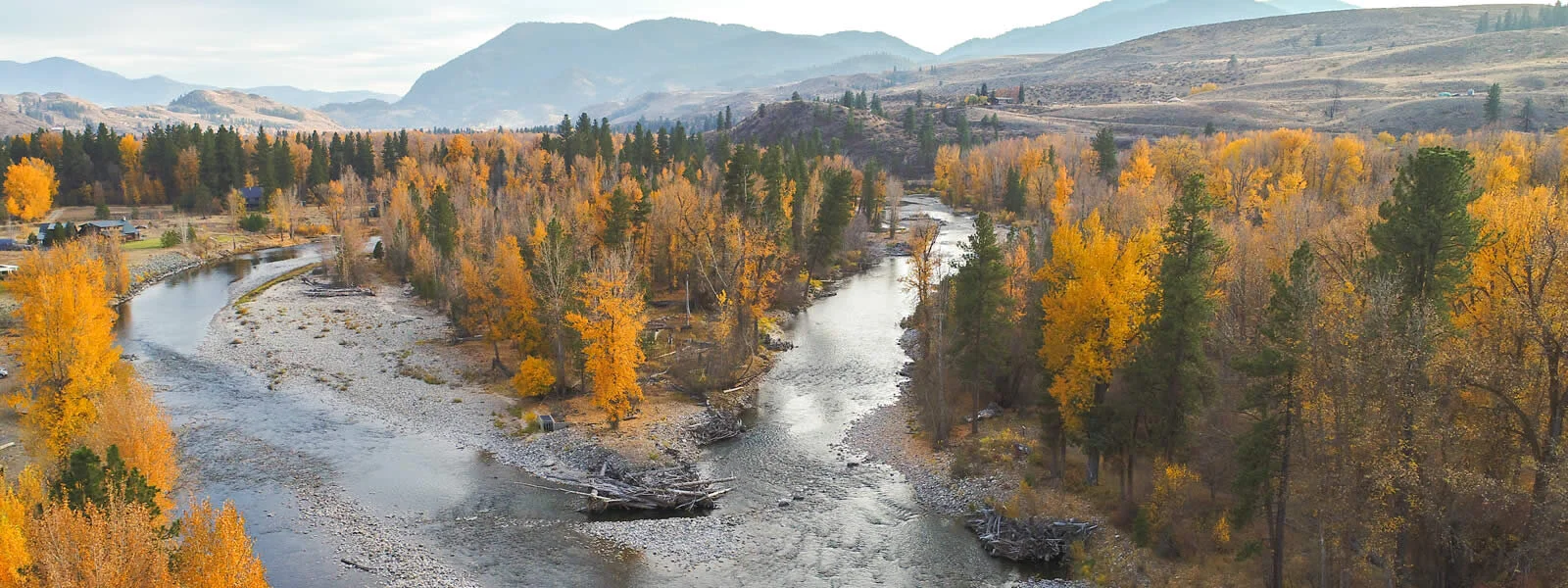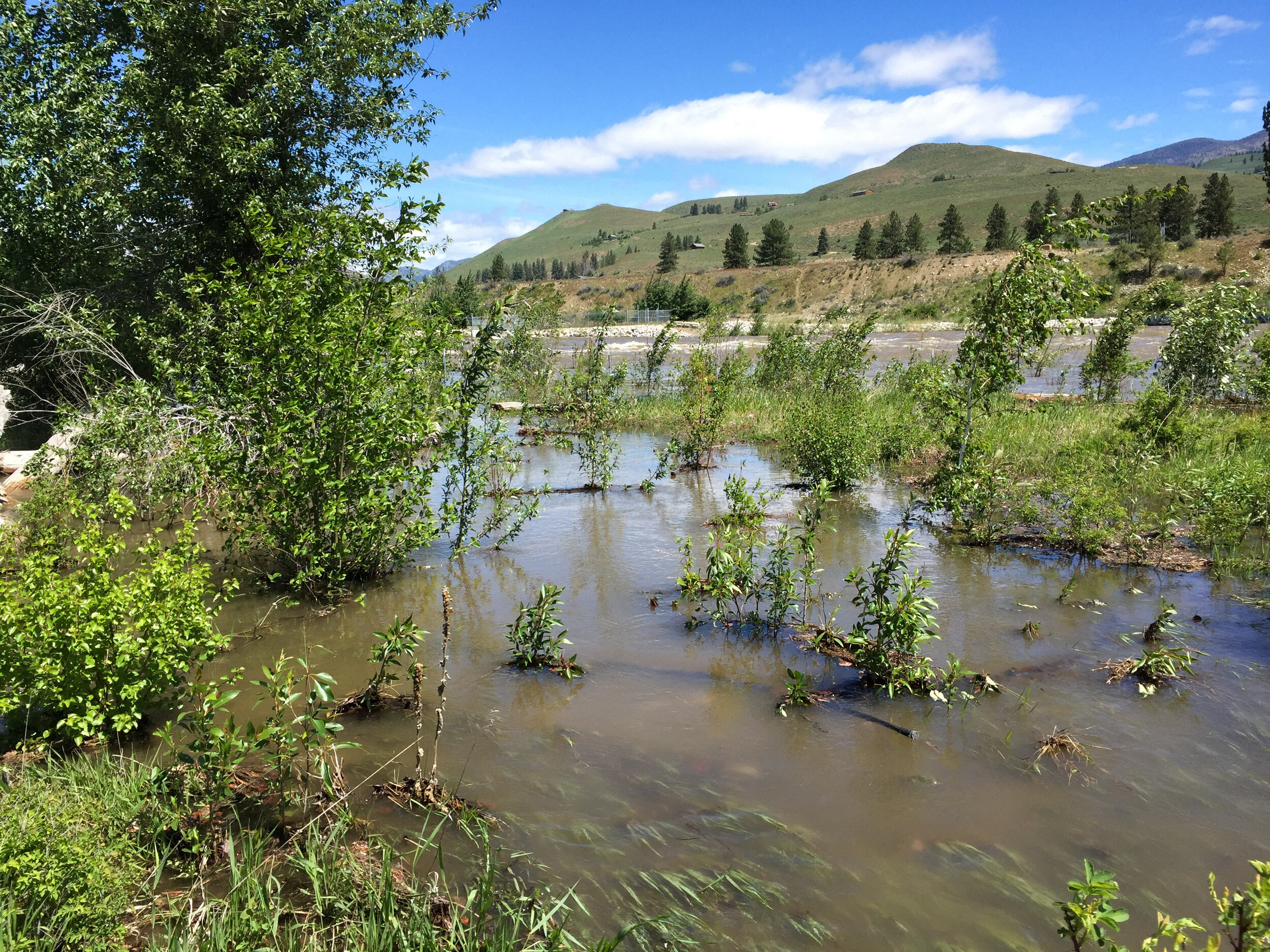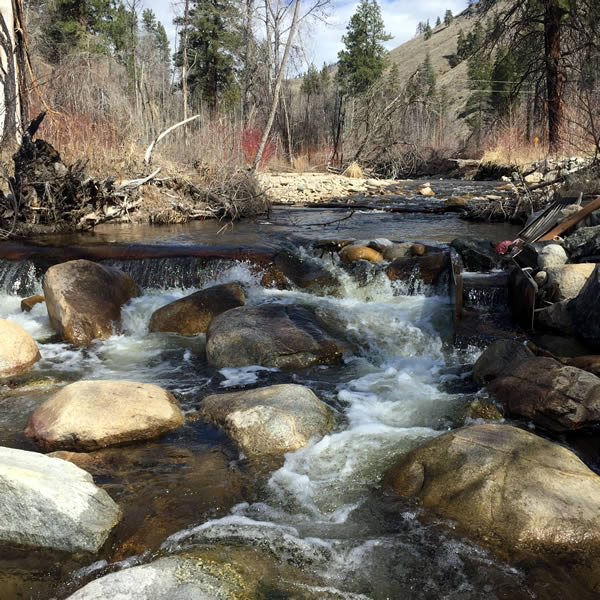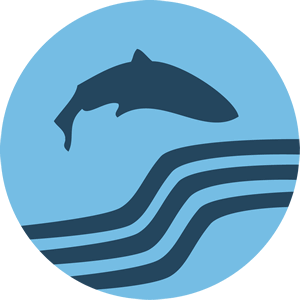Project Portfolio
Methow Salmon’s projects focus on creating salmon recovery solutions with lasting value. Many of our projects are completed within rivers that flow through private lands, or are proximate to infrastructure like roads and utilities. Our projects seek to restore river process while respecting the social constraints of a particular site. In order to restore river process and achieve the long-term habitat benefit of a functioning river system, Methow Salmon project work includes restoring riparian areas, increasing instream habitat complexity, improved floodplain and side channel connection and addressing barriers to fish passage. Methow Salmon is a community bases organization that relies on the support of our neighbors. We host annual river clean up efforts to keep our waterways free of trash.
Restoring Riparian Forest
Young cottonwood trees along the Methow River.
Vegetation that grows along a stream creates shade, which helps keep water temperatures cool. Cold water is an important habitat factor for fish, particularly salmonids like spring chinook and bull trout. Trees and roots provide bank stability and contribute vital nutrients to soil and water. When streamside trees fall into the water, these fallen trees become important habitat complexity for fish. Because vegetation is a crucial element of riparian health, many of Methow Salmon’s habitat projects include replanting cleared areas along the rivers with locally-sourced native plants. These plantings will require several years of watering and maintenance to become fully established, but after that initial effort, will provide long-term benefits to the entire riparian system.
Habitat Complexity
Rivers in the Methow are naturally woody. Logs and wood accumulations in the river promote pool formation and provide fish with a place to hide from predators, find food, and seek refuge from fast water currents. Tree clearing and streamside development has reduced the amount of wood in the rivers. Reintroducing habitat complexity through placement of engineered structures of interwoven wood in the river or floodplain helps to replicate the function of natural wood.
Engineered wood structures and natural wood accumulations in rivers provide habitat for salmonids to feed and hide from predators.
Floodplain & Side Channel Reconnection
During spring run off the slow moving water on the floodplain offers juveniles refuge from the high flows of the main channel.
At some locations along the river levees have been constructed to prevent floodwaters from inundating agricultural and developed land. Levees can also block fish access to important side channel and floodplain habitat, and confine the river to a narrower, swifter channel less suited to the needs of listed salmon. Methow Salmon’s reconnection projects work with landowners to modify levees or remove unneeded levees to provide fish with additional off channel habitat for spawning, feeding, and juvenile rearing.
Providing Fish Passage
Some natural and human made features in the stream can limit or prevent fish passage. Removing or modifying these fish barriers can open up many miles of valuable habitat for fish.
Dams are often constructed to divert irrigation water for the stream to crops and field. These dams are often full or partial passage barriers. Working with local irrigators, Methow Salmon and our partners have developed projects that address water delivery needs, improve diversion reliability and efficiency, and allow fish to swim upstream once again.
Culverts can prevent the passage of fish upstream when the downstream end of the culvert is too high.
Road culverts are often used as an alternative to bridges for stream crossings. However, if culverts are too small or installed improperly, they can create barriers to fish movement. For example, if the downstream end of the culvert is too high above the water, the jump may be too much to allow fish passage. Even when there is no jump, if culverts that are not sized properly for fish, the water flow through the culvert may be too swift or too shallow during certain flows. Methow Salmon projects have replaced such barrier culverts with fish friendly channel-spanning arches or bridges. These structures allow the water to flow more naturally beneath the road and re-establish passage to historic fish runs. Doing so creates a win for drivers and a win for fish.
Community Service
In 2014 a significant rain event occurred across many areas that had burned during the Carlton Complex fires. The subsequent mudslides and flooding placed an unprecedented amount of debris into the Methow River from Benson Creek down to Pateros. Included with the mud and rock were large amounts of building materials, garbage, farm equipment and vehicles. Methow Salmon led a coordinated effort connecting landowners and volunteers that resulted in removal of more than 30,000 lbs. of human made debris from the Methow River.
Removing trash from the river is a community driven effort.
Following the debris round-up, Methow Salmon, secured funding from the Washington Department of Natural Resources, to remove more than 30 derelict vehicles from the Methow River between Twisp and Winthrop. The vehicles were originally placed on river banks following flood events in the past century as a quick method to stabilize riverbanks that had been significantly eroded. While the cars slowed erosion, the tight placement in these areas also limited re-growth of native vegetation necessary for long-term stabilization. Methow Salmon worked with several local contractors to cut and remove the old cars and allow room for established plants grow. A number of these cars were up-cycled into community art projects.
This initial effort has continued with annual river clean up efforts.
“If you are a fish coming to the Methow today, you’ve got a lot more places to go.”













